What Can You Learn From the Best Maths Tutors When it Comes to Online Tutoring?
updated by Dr Scott R. Dempsey on 18th November, 2021
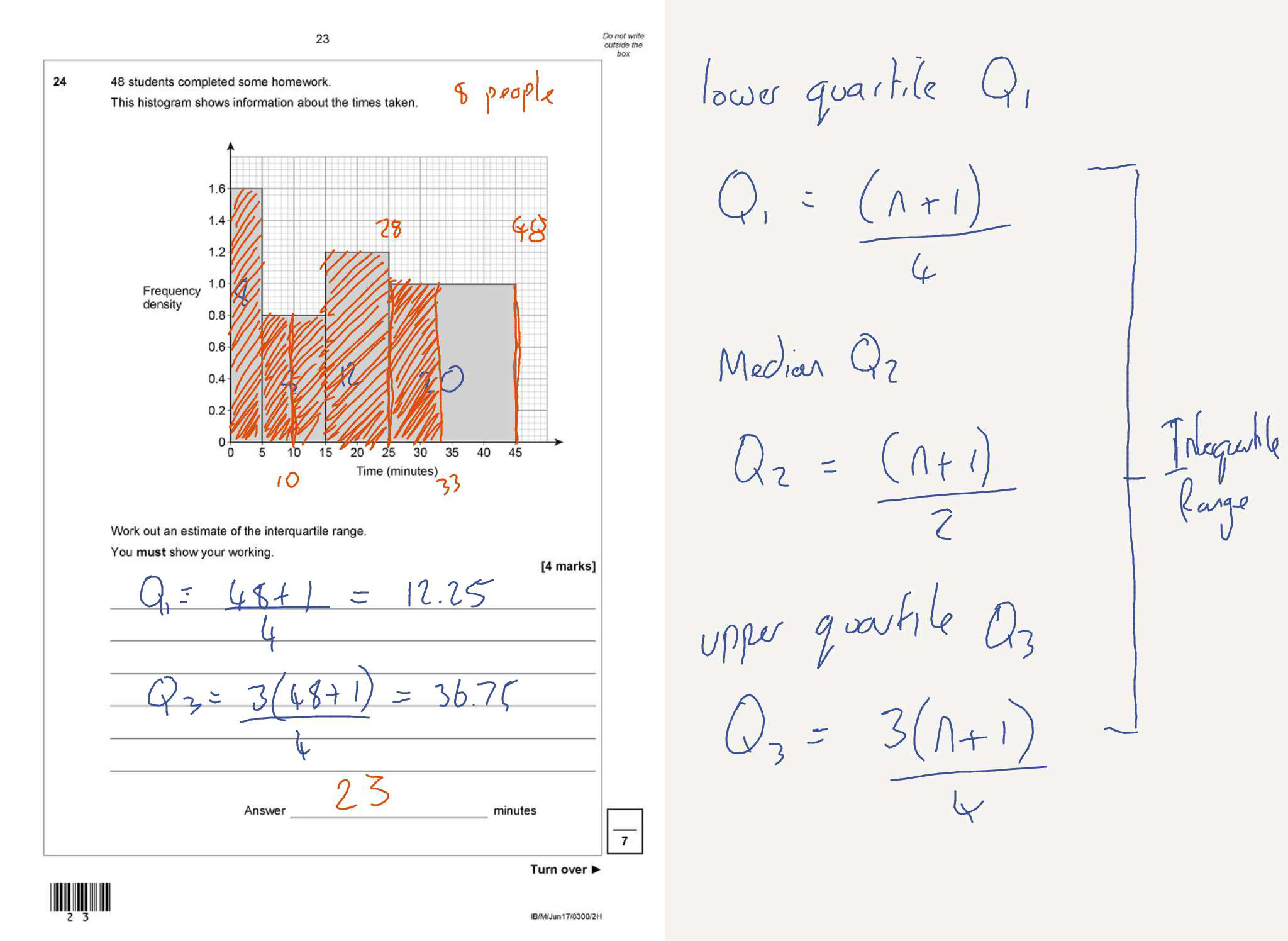
Are you a tutor or student currently involved in online tutoring?
Perhaps you currently have lessons in-person but are looking to move online?
Maybe you teach maths and are seeking a wider platform to share your skills and passion for the subject?
Well, to help you get started, or really ramp-up your online tutoring efforts we asked some of our top tutors (who between them have delivered tens of thousands of hours of online tutoring) to share some of their top tips. We asked them to be subject specific, so we could give you better insights into how online tutoring might be adapted for different subjects.
Given that 75% of those tutors teach maths, we thought that would be a good place to start. Furthermore, maths is a core subject at GCSE and the most popular subject at A-level with almost 90,000 students sitting the exam in 2021.
The majority of our top tutors have been tutoring for 2-4 years and are a mixture of full-time and part-time tutors ranging from university students to retired teachers. Almost unanimously, they have seen an increase in the proportion of students they tutor online as opposed to offline. This is a trend that is only likely to continue - so there has never been a better time to learn more about teaching online.
“I now tutor all my students online, which has evolved dramatically from an offline only basis just 3 years ago. I am thoroughly happy with the change and my students are as well.”
Owen - Maths and English Tutor (400+ hours on Bramble)
“I'm 100% online now, but a year ago it was 1 online to 5 offline. I recently dropped all my offline students because I moved to a new area, but was able to continue with my online student. Interestingly, my online student used to be offline until his family moved. We've been able to continue our relationship because of Bramble!”
Stephen - Maths, Science & Languages Tutor (50+ hours on Bramble)
The tutors we asked in our survey all preferred online tutoring or a mix of online and in person tutoring.
Top Tips for Tutoring Maths Online
Tutoring online requires a slightly different approach to tutoring offline. Many tutors spoke of the importance of frequently checking understanding with the student when teaching online. They talked about doing this verbally by simply asking but also about the importance of getting students to complete work on the whiteboard. Online tutoring offers a great opportunity to ensure the student is more actively engaged: drawing figures on the whiteboard or solving exam questions.
Tutors also mentioned that their students often feel more comfortable working through problems online as they are able to think things through without someone looking over their shoulder. This gives students space to check their understanding throughout the lesson. The fact that students are also able to work from the environment they feel most comfortable in only helps to put them more at ease.
One of the more obvious advantages of tutoring online is access to large pools of resources. Using Bramble, there are no fewer than 5 ways to upload resources into a session and almost all of our top tutors mentioned resources as an important part of being successful online.
“I often want to point things out on the whiteboard, so I circle and underline a lot of things on the board and draw arrows to things as I am explaining. I take screenshots of past exam papers and put them on the board and have the student answer them as if they were in a real exam, typing or writing in the answer field. Make use of the different colours, they'll make the notes more stimulating for students when reviewing.”
Laetitia - Maths and Chemistry Tutor (150+ hours on Bramble)
“It is quite useful to upload pictures of the diagrams and annotate them as you go along, that way they can serve as notes for students to review later! For maths, I often add pictures of the questions we're working on and have the working out on the side so that it can be easier for the student to refer to it again.”
Sam - Maths, Economics & Biology Tutor (300+ hours on Bramble)
To summarise, here are the top four tips from all of the maths tutors we surveyed:
- Have good resources to hand (exam papers, figures and diagrams). A huge benefit of online tutoring is that you only need to use a resource once and it will be forever stored in your library to search for again and again.
- Once the resource has been imported, let the student write the solutions and notes in their own way (this will be valuable as revision resources they understand and remember). All students think and write notes in different ways. Let them use their own unique way of working through a problem and writing it in a way that will make sense to them.
- Allow the student to work through the problem, while getting them to explain what they are doing. If the tutor does it all, it can be a very passive experience for the student and not encourage them to think hard about the problem. Also, as a tutor you won’t recognise any bottlenecks in the student's thinking. This is critical for maths because of its step-by-step nature.
- Use a good drawing tablet or a touchscreen device with a stylus (to read more about our thoughts on this, check out our Ultimate Equipment Guide for online tutoring). This makes it much easier for you to work through equations and draw out diagrams with the student.
Want to see those tips in action? Here are some example pages:
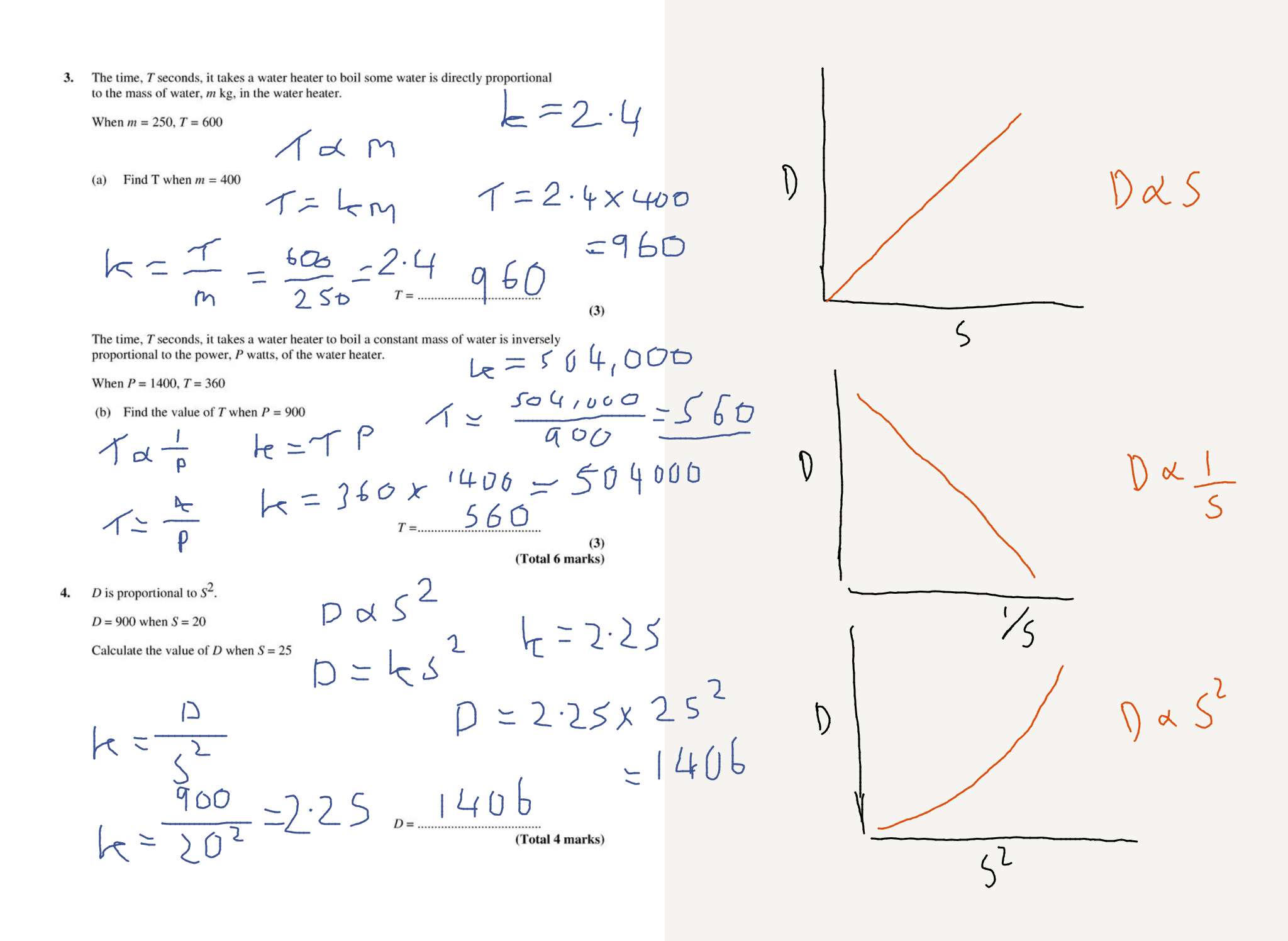
A great example of student-tutor collaboration on a direct and inverse proportion exam question which was imported through drag-and-drop. In this example, the student was using an iPad and the tutor a Windows Surface Pro and Surface Pen.

In this example, the student is working on a sine and cosine rule question with occasional direction and reassurance from the tutor who adds some forumlas for reassurance.
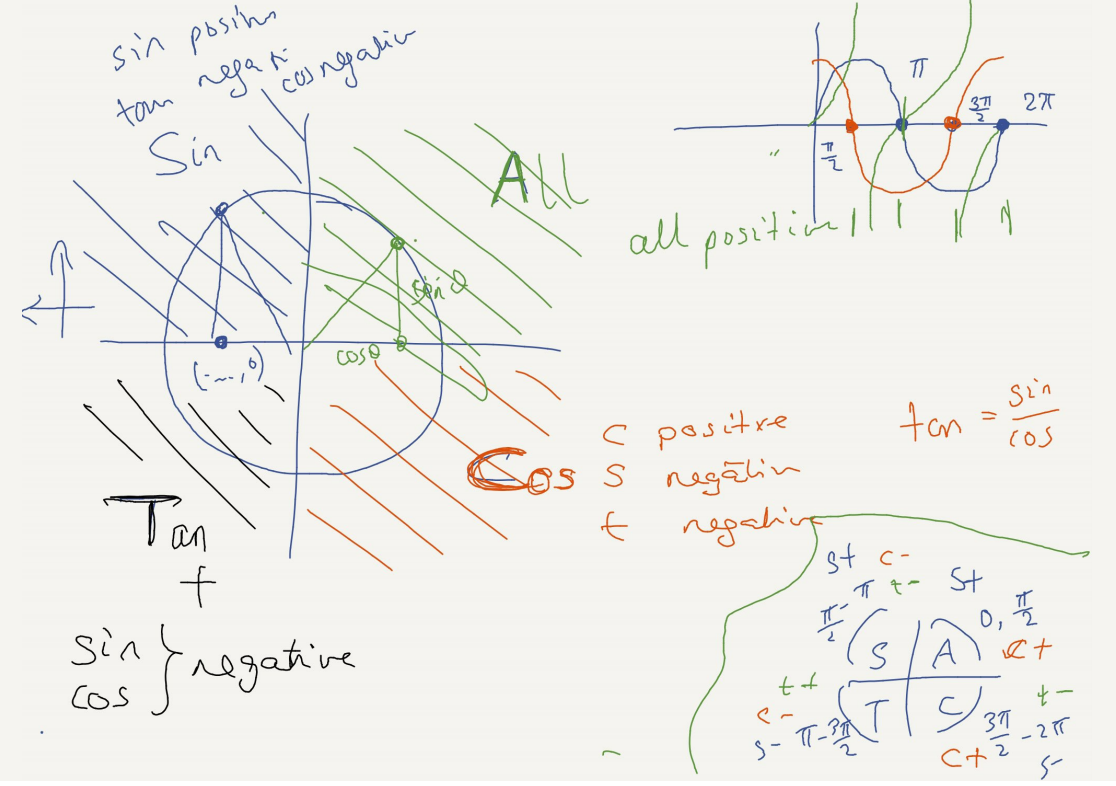
No resources needed this time. This type of page can make a fantastic revision resource for the student to return to - drawn in their own style.
Why Maths is the Perfect Subject for Online Tutoring
Maths is extremely well suited to being taught online. There is a huge amount of problem-solving and most of the revision involves working through papers and questions. This lends itself nicely to the online model, because it’s very simple to upload the resource you need and for all the work to be done by the student next to the questions.
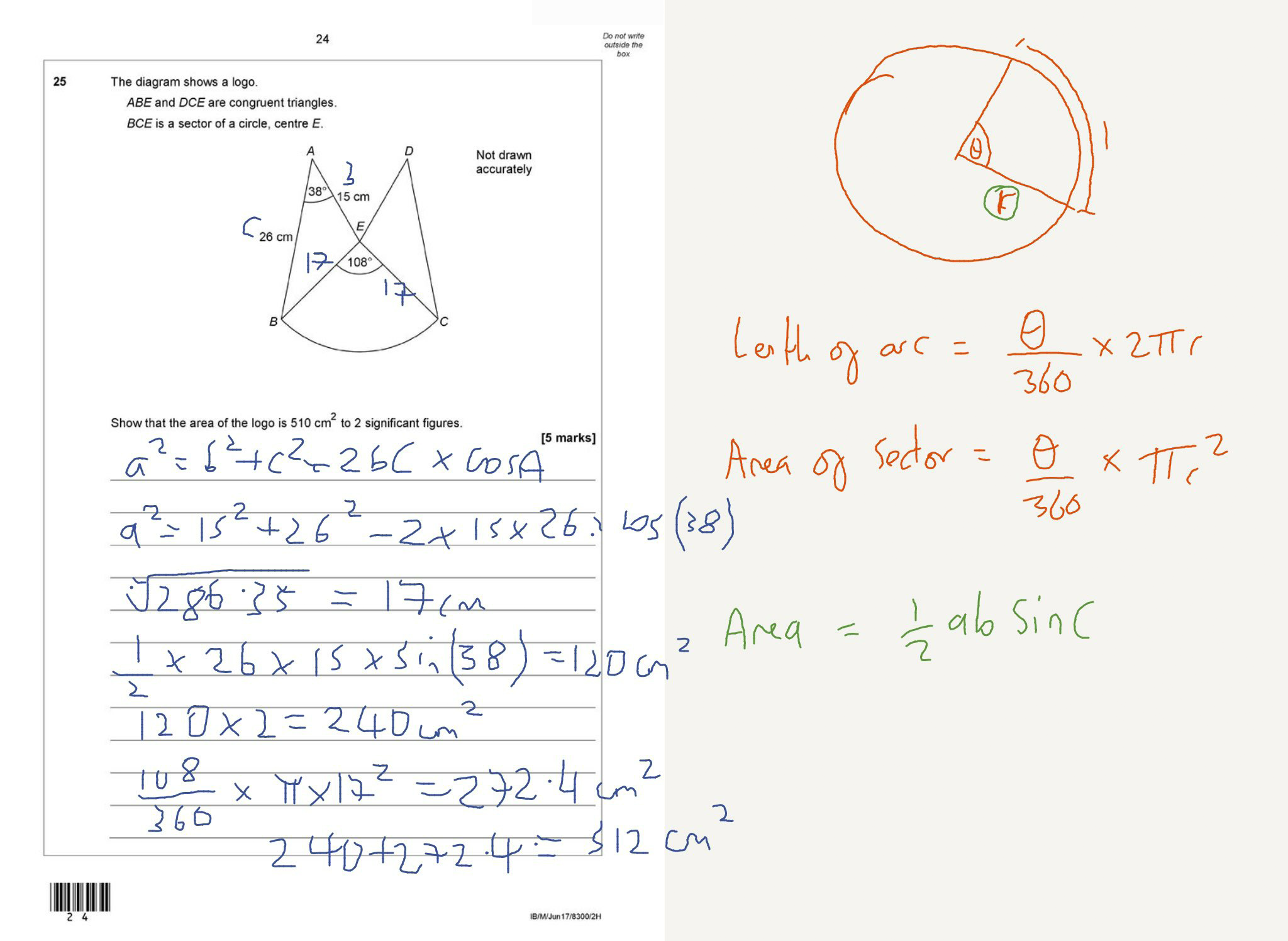
Another example of the tutor assisting the student by adding some formulas on the right side of the page. This assistance leads to the student successfully answering the question.
Here are some additional suggestions straight from the mouths' of top tutors:
“It sounds scary to begin with and I was skeptical about it when I initially started, however, it really is very convenient. You make notes using the whiteboard slides during class and students can refer to them again along with the recording if they didn't fully grasp what was being taught during class.”
Sam - Maths, Economics & Biology tutor (300+ hours on Bramble)
“Make the switch! It's incredibly convenient for you as tutor. It's even better if you have a touch screen device as it makes things easier.”
Alisia - Maths tutor (700+ hours on Bramble)
“Be prepared as if you were in person and be focused while you are teaching. Make sure to actively listen to the student and ask for feedback often”
Sofia - Maths & Economics Tutor (150+ hours on Bramble )
Search and Revise Previous Maths Sessions
One of the greatest advantages of tutoring maths online is that the entire session can be used as a revision resource. On Bramble, all sessions are recorded, saved to the students library and made instantly searchable. Within sesconds they can search for a topic or resource using keywords.
The following is an example of using Smart Search to revise quadratics.
Providing Feedback and Tracking Progress
Tutoring during the session is only half the job of a great maths tutor. We want to ensure congruence between sessions by setting goals, providing feedback and tracking progress.
Using a platform that enables you to save and review your online sessions is a great start.
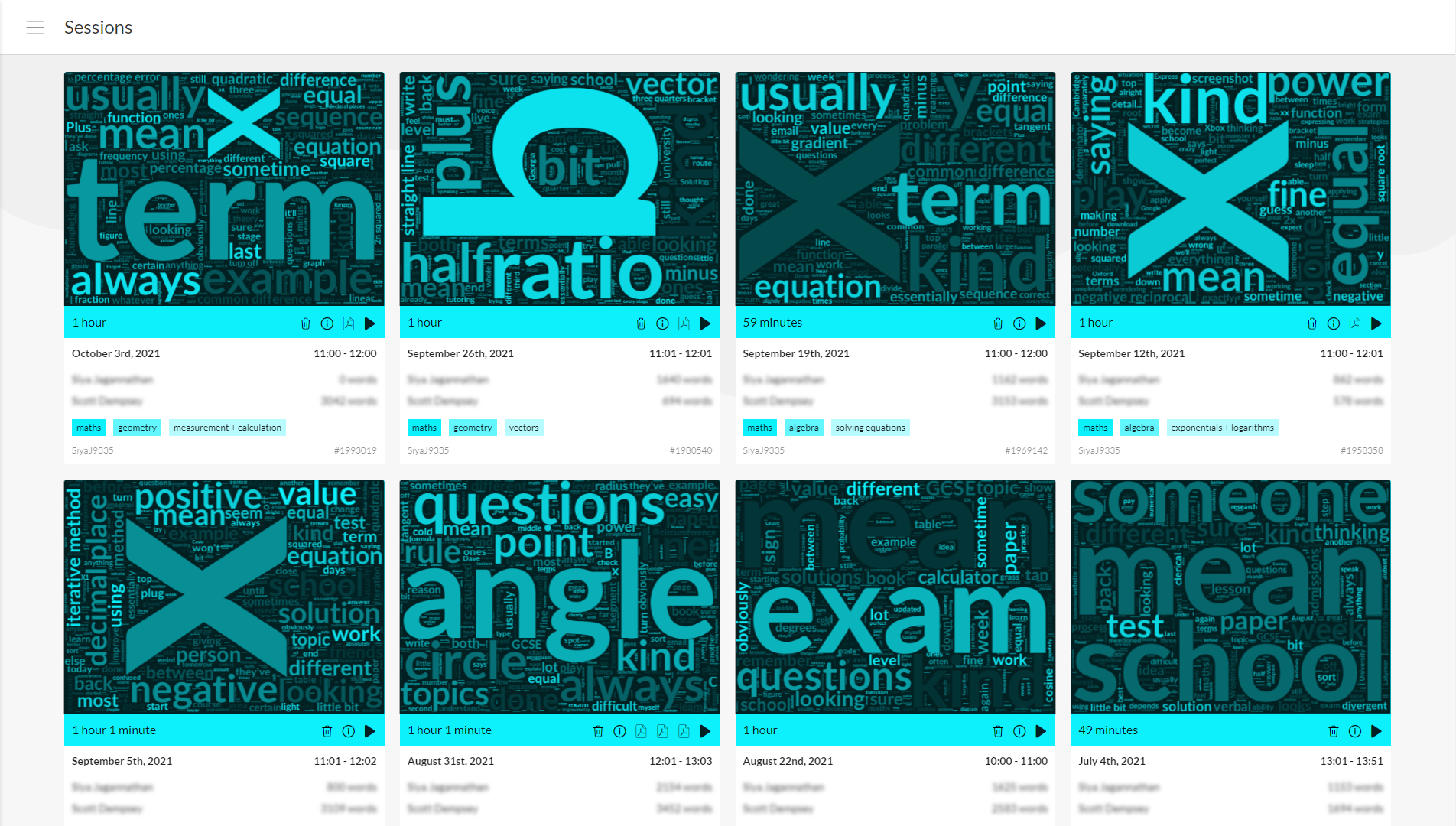
Session synopsis and Smart Subtopics detection make it easy for students to label and find previous lessons and pages.
As we discussed in the section above, if the student can access their sessions with you for future revision, that provides them with the assurance that they are learning the correct material in the way it was taught.
It's also important to track your students progress from session to session. This can be done through assessments and examination-style questions and also by providing feedback at the end of each session. CUE Ratings has been designed to enable you to give feeback on your students based on their confidence, understanding and engagement during the session.
In fact, in a recent analysis of Bramble data, students showed an incredible 88% increase in maths assessment scores through a UK National Tutoring Programme (NTP) partner. This demonstrates just how important tracking and feedback are.
Maths Insights for Online Tutoring
Finally, let's take a look and what we've learnt from 1.5 million hours of online tutoring on Bramble.

Maths accounts for 30% of all tutoring on Bramble in 2021. This broadly matches what we see in the number of pupils chosing to sit maths at A-level in the UK. It is the most popular subject for online tutoring.
In addition to Smart Subject detection, maths sessions on Bramble can be broken down by topic and subtopic. The following maths topics are most commonly taught:
- Number (45% of all online maths lessons)
- Algebra (15%)
- Geometry (12%)
- Statistics & probability (5%)
- Calculus (4%)
- Ratio & proportion (1%)
The remaining percentage is not specific to a particular topic and may comprise maths for the younger years which is less differentiated into topics.
We can break the main maths topics down further and see how popular particular subtopics are.
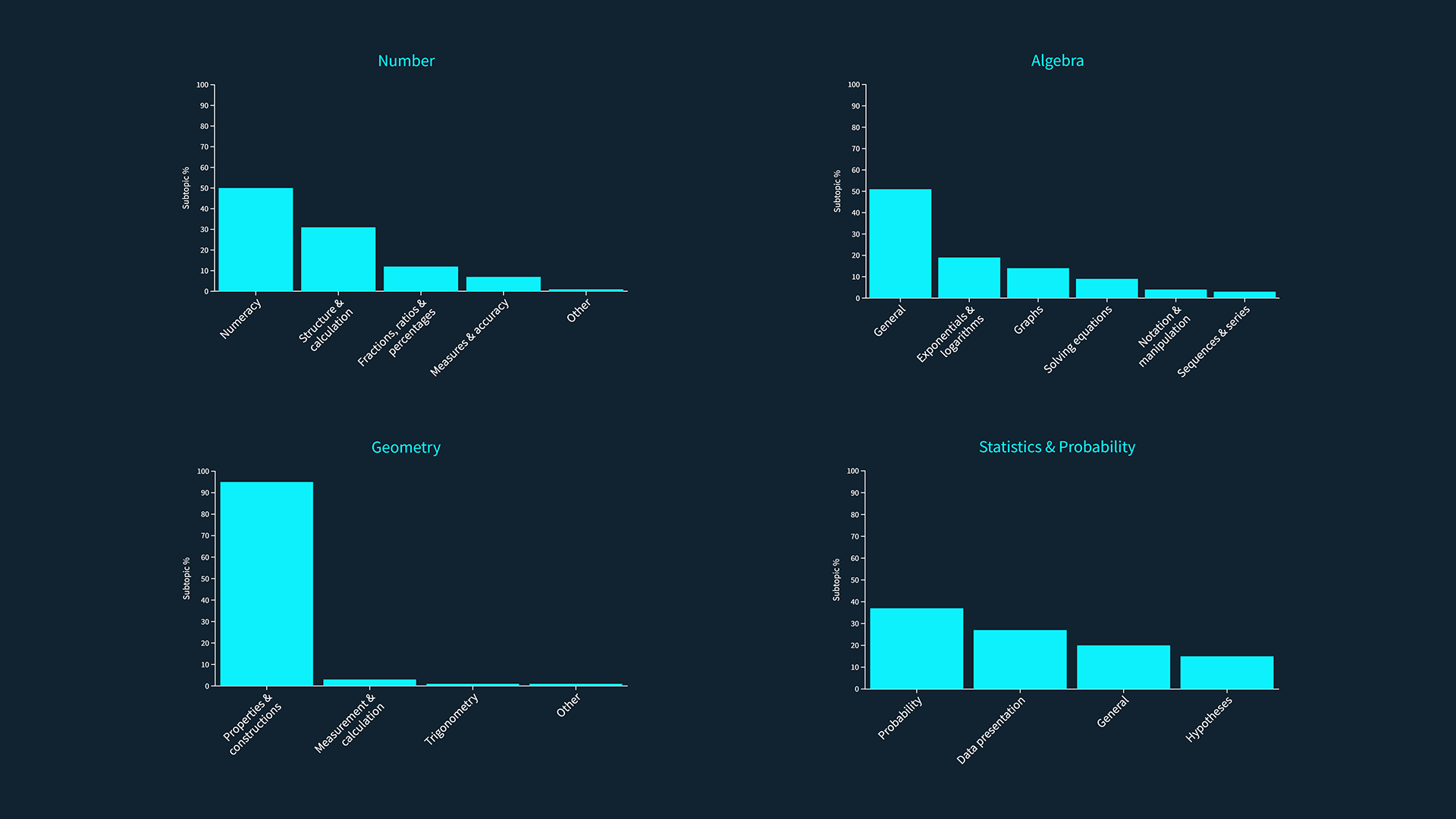
Above shows the subtopic data for major maths topics tutored on Bramble.
You can see that numeracy is the the most commonly tutored subtopic in number. It's possible that this also represents some of the younger students taught on Bramble. Other popular subtopics include, structure and calculation (30%), fractions, ratios and percentages (12%) and measures and accuracy(7%).
Algebra is the next most common maths topic taught on Bramble. From the subtopics that can be differentiated within algebra, exponentials and logarithms accounts for 19% of algebra covered during online tutoring. This is closely followed by graphs (14%), solving equations (9%), notation and manipulation (4%) and sequences and series (3%).
Geometry is interesting because our data suggests that properties and constructions accounts for most of the topic covered during online tutoring. At almost 95%, tutors appear to be covering this subtopic considerably more than topics such as measurement and calculation (3%) and trigonometry (1%).
The final subtopics we've included here belong to the statistics and probablity topics. For simplicity, we've included them together. Tutors appear to spend a more even amount of time tutoring probablity (37%), data presentation (27%) and hypotheses (15%).
Hopefully, these insights can provide you with an indication of where the most demand might be and then areas of the maths specification in which students might be needing more help.
Summary and Conclusions
As a subject, maths is not only the most in-demand subject to tutor online but also perfect for such a format. The step-by-step sequential problem solving a student must practice is effectively done through uploading question papers and being able to observe how they go about tackling them in real-time. When using a drawing tablet or stylus, this replicates how they would do so on pen and paper, with the advantage that no one is looking over their shoulder as well as letting the student work with the best possible tutor, no matter where they're based.
As a final benefit we would be remiss not to mention that students and tutors can (and should) create their own library of revision resources (through their tutorials) and then playback their sessions. In fact, now you can even search for a particular topic or question and recall it from your previous sessions. This means lesson material is never lost, rather it can be used as an asset which gets bigger and better the more online tutoring sessions you have.
We would like to thank all of our top tutors for taking the time to give us feedback on what has made them so successful online and hope their advice inspires you to do the same. If you found this post useful, check out our other subject-specific articles on tutoring English online, tutoring science online and tutoring younger students online.




